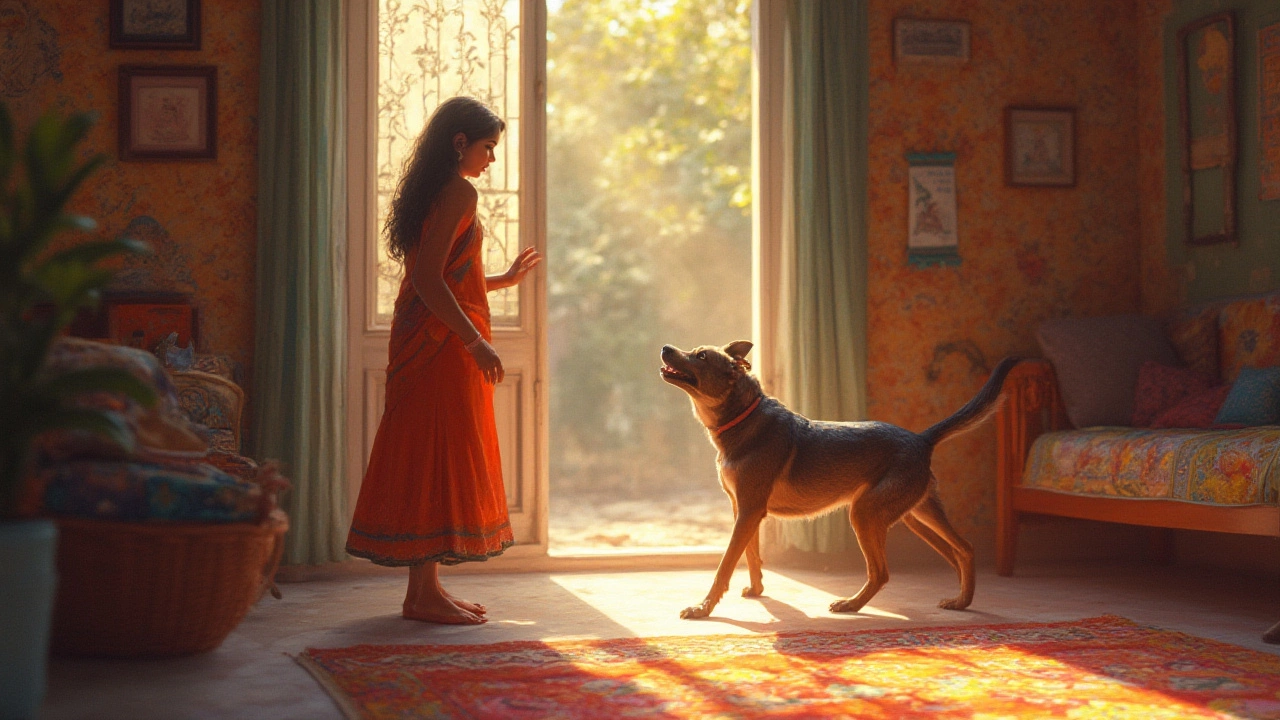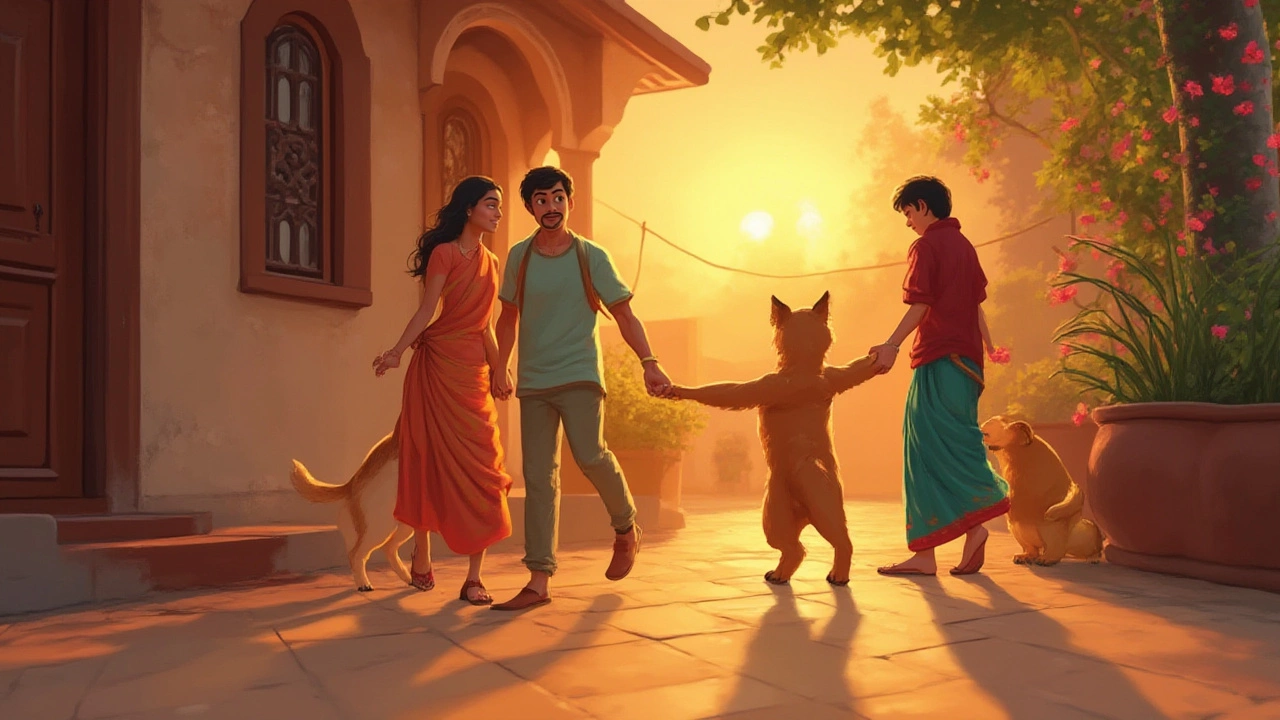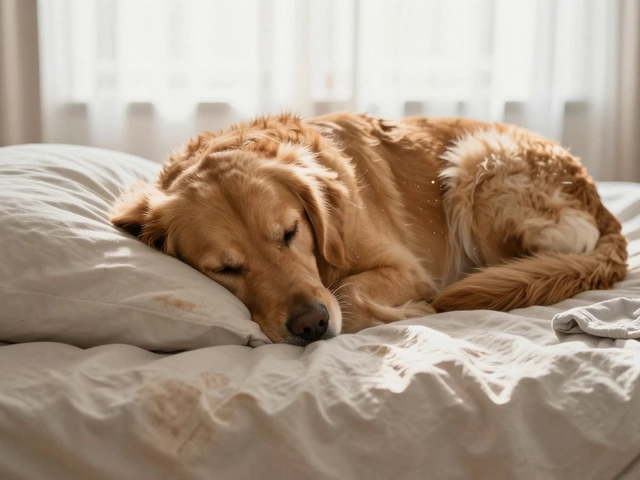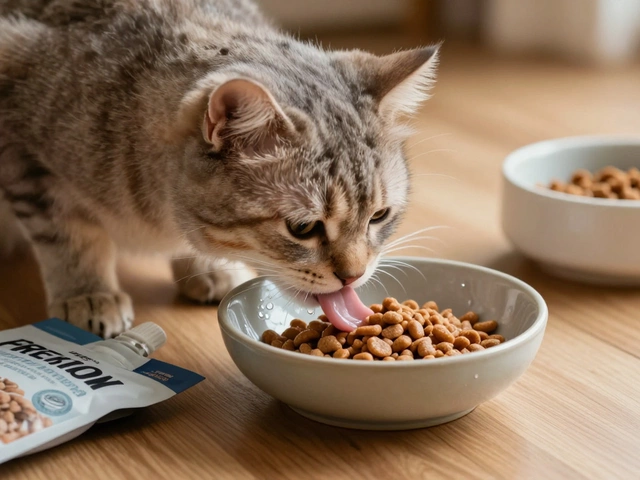
If you’ve ever walked into a room and spotted your dog stretching in your direction, almost like they’re getting ready for a yoga session, you’re not alone. There’s a secret behind this cute ritual that almost every dog parent from Paris to Tokyo has noticed. It’s not just about a stiff back or waking up from a nap. This stretch, sometimes called the “greeting bow,” is packed with social cues, bits of affection, science, and—believe it or not—a few ancestral memories tucked away in your dog’s DNA. Ready for what’s really going on?
Unpacking the 'Greeting Bow': What Your Dog Is Really Saying
That big, slow stretch—the kind where your dog lowers their front chest, paws out, and back legs tall—is more than a casual “good morning.” This classic pose is actually called a “play bow” by dog behaviorists, and it’s one of the most honest, friendly gestures in canine body language. When your dog stretches like this as you come home or approach them, think of it as their way of saying, “Hey! I missed you, and I’m glad you’re here.” It’s a happy, non-threatening way to reconnect, breaking down any tension and inviting you into their space.
But what about those times your dog does a less dramatic stretch—just the classic rise from a nap, pushing their paws forward and arching their back? While it’s partly loosening their body up, there’s a twist: this is a leftover greeting ritual from wild ancestors. Wolves and wild canines use stretching both to wake their muscles and to signal, “We’re cool, let’s interact.” Modern pet dogs inherited this double meaning: warming up and being social, all at once.
Here’s an interesting tidbit: according to renowned animal behaviorist Dr. Patricia McConnell, "A dog's stretch is often an unspoken invitation, signaling trust, warmth, and an eagerness to share a moment with their person."
“The greeting stretch is a wonderful reminder that dogs express an enormous amount through posture alone—often more than words would manage.” – Dr. Patricia McConnell, The Other End of the Leash
The stretching is also partly instinct. In packs, wolves greet each other after sleep with elaborate body language, including big stretches and tail wags. Domestic dogs don’t lose these built-in habits—even if their wolf cousins are long gone. This mix of muscle need, social bonding, and leftover instinct is powerful. Your dog’s body is speaking loud and clear when you walk into the room, even if they can’t say "hello" in English.
The Science of Stretching: Muscles, Hormones, and the Happy Factor
Let’s dig into the biology behind that stretchy hello. When dogs get up and stretch, they’re not just shaking off sleep; they’re actually boosting circulation and releasing feel-good chemicals. Stretching wakes up muscles by stimulating blood flow and flushes new oxygen through tissues. This gets their body ready for interaction, whether it’s playtime, walks, or just lounging around with you on the couch.
Here’s the coolest part: stretching is strongly linked to oxytocin, often called the "love hormone." Your dog is hardwired to associate your presence with comfort. When they see you, they get a little bump of oxytocin, which relaxes their body and mind, making those stretches feel extra satisfying. That’s why dogs will often stretch more when you’re around—they feel safe, happy, and socially connected.
Researchers at the University of Tokyo found in a 2024 study that dogs increased their frequency of greeting stretches by 76% when reunited with a familiar human, compared to a stranger. That’s not a coincidence. Your bond is physically written into your dog’s routine, showing up every time they greet you with that iconic stretch.
On the hormonal front, stretching also reduces levels of cortisol, the body’s stress hormone. So, your dog isn’t just being cute—they’re actively de-stressing whenever they greet you in this way. The body language is part self-care, part social gesture, all rolled into one.
If your dog sometimes holds their stretch longer with you than with other people, it could be because of your unique bond. Dogs tailor their body language to the individual, even adjusting the intensity of their stretch based on how excited (or relaxed) you make them feel. And science backs up what dog lovers already knew: your presence makes their world a whole lot better.

Body Language Breakdown: From Stretch to Smile
It’s tempting to think a stretch is just about getting the kinks out, but in dog talk, the rest of their body language adds layers to the message. Watch your dog’s tail when they stretch—they might wag it gently or even sweep the ground. A wiggly, low wag combined with a stretch is like a bear hug in dog code. Ears forward, soft eyes, maybe a little yawn? All signs that your buddy is relaxed, happy, and trying to show you that you’re still in their good books.
It’s also common to see a bit of lip licking, gentle blinking, or even playful sneezes mixed in. These add-ons to the stretch are part of a whole greeting routine that signals trust. Dogs are masters at reading each other’s body cues, and they assume you’ll get the hint too—even if you sometimes miss the subtleties. Next time your dog is mid-stretch, try mirroring the gesture; lower your own torso in a playful way. You’ll be surprised how many dogs respond by stretching deeper, wiggling more, or zipping right into play mode.
What if your dog doesn’t stretch when you come home? No need to worry. Some dogs use other greetings: bowing, wiggling, or simply sitting with eager eyes. Every dog has their own comfort zone, shaped by personality, environment, and past experiences. Adopted or shy dogs might take a while to show full-body stretches, but even tiny tail flicks or softened posture are signs that they’re letting you in.
Here’s a practical tip: focus on what comes after the stretch. If your dog bounds over for belly rubs, nudges your hand, or invites you to play, it means you’ve been given a two-paws-up greeting. Respond in kind—positive attention in this moment deepens your dog’s trust and cements the happy greeting ritual.
Tips for a Better Greeting: Strengthening the Stretch Bond
If you want to really dial up those happy greetings, there are a few easy ways to encourage and appreciate your dog’s stretching welcome. Make returning home a calm, positive event—avoid coming in with lots of noise or sudden movement, which can startle them out of their routine. Instead, pause at the door and give your dog a second to notice you before leaning into their space. The more relaxed you are, the more confident and comfortable your dog will feel stretching in your presence.
Make stretching interactive. Next time you spot your dog doing that greeting bow, mimic it with a playful crouch or by stretching your arms toward them. Dogs read body language remarkably well, and reciprocating their greeting can set off a fun, positive feedback loop—often leading straight into a game or a little affectionate tussle. It builds trust and makes you more “doglike” in your responses, which is exactly what your buddy wants.
If you have multiple dogs, watch how they stretch around each other and with you. Often, they’ll take turns or mirror stretches, creating a mini dance of welcome rituals. Encourage this positive interaction by praising gentle greetings and rewarding relaxed, happy behavior with treats or play. If your dog is shy about stretching, avoid reaching over them or hovering, which might be seen as intimidating. Give them space and let them build up confidence at their own pace.
Bored or underexercised dogs might greet you with more frantic energy, bouncing instead of stretching, or even jumping. If this sounds familiar, add more walks, scent games, or puzzle toys to your routine. Well-exercised dogs are calmer and more likely to greet you with a stretch than a jump. If in doubt, just match your energy to theirs—meet a stretch with a smile, and watch the bond deepen over time.
And remember: dogs don’t fake it. That why do dogs stretch question boils down to genuine joy, trust, and a need to bond with their favorite humans. It’s a language as honest as a wagging tail or a sloppy kiss on the nose.




